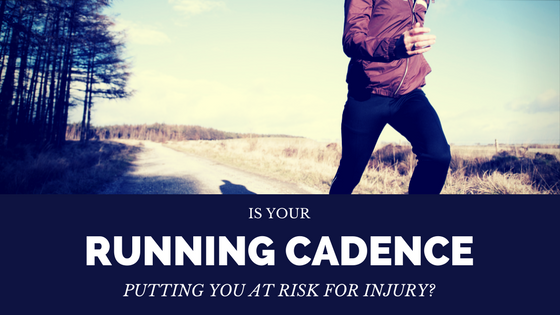
What is Running Cadence?
Running cadence is the number of steps you take each minute. Each time you strike the ground counts as a step. So if you have a running cadence of 180 spm (steps per minute) at a given speed, that means you take 180 steps each minute when running at that speed. Running cadence has been linked to a whole host of biomechanical features related to running performance and injury risk. If you’re wondering what this means for you as a recreational runner, read on.
Running Cadence is Often Low in Recreational Runners
If you have never done any work on your running technique or running cadence then there is a very high chance that your running cadence is somewhere between 150 and 170 steps per minute for most speeds. As your pace increases, your cadence will also increase, but only a little bit. Running at your easy pace vs sprint interval pace might see an increase in cadence from 155 to 162 for example. However, both will likely fall in the 150-170 range.
I call the 150-170 cadence the Unhappy Zone. This is a low cadence and problematic for the reasons we will discuss below. I call the 170-190 cadence the Happy Zone.

The Happy Zone vs The Unhappy Zone of Running Cadence
Here’s a video of me running on a treadmill with a cadence of 190 spm (Happy Zone) at a pace of 6:00 minutes per km.
Here’s another video with me running at a cadence of 150 (Unhappy Zone) at the same pace of 6:00 min/km. Note that the speed of my running is exactly the same for both videos, 6:00 min/km.
The Effect of Lower Cadence on Running Biomechanics
Biomechanics sounds awfully impressive doesn’t it? For our purposes, think of biomechanics as the features of how you move. These features can be divided into two sections: Kinematics and Kinetics.
When you run we can measure different joint angles and stuff and we call that kinematics. You can see kinematics. Another feature of how you move (your biomechanics) is how much force you absorb or experience in different places and that is called kinetics. This can also be measured using fancy equipment like force plates etc. You can not see kinetics, you have to measure them with equipment.
Let’s use an example to illustrate the difference. If I stand upright holding my arms above my head you can measure all my joint angles and stuff to determine my kinematics. If you then give me a 1000 lb barbell and get me to hold it above my head you can measure all the joint angles and stuff and you would conclude that the kinematics are exactly the same. My experience in the second scenario however, is very different. Holding the 1000 lb barbell above my head the forces acting on my body are very different. Those internal forces I am experiencing in my body are the kinetics.
Well, when we run we experience both kinetics and kinematics. The kinetics are the forces you experience within your body. The kinematics are the movements you make. Both features are intricately linked and come together to make up your running technique, or Running Biomechanics.
Effect of Cadence on Kinematics and Kinetics
In 2014, Amy Schubert and colleagues did a systematic review of the research published on running cadence (Schubert 2014). This means they searched out all the papers that analysed the biomechanics of runners at different running cadences. I’ve simplified and summarized their findings to help make it useful for recreational runners.

With a lower cadence (landing with straighter knees and harder ankles – kinematics), produces a harder landing with higher impact forces within the leg (kinetics). Conversely, running with a higher cadence (landing with softer knees and ankles – kinematics), produces a softer landing with lower impact forces (kinetics).
I divided the table into kinematics and kinetics. The blue boxes are the kinematics – the things we can see. The green boxes are the kinetics, the forces we can’t see. To summarize, the kinematics (the movements that we can see) produce the kinetics (the forces we can’t see).
What do I do if my Cadence is in the Unhappy Zone?
I’ve written previously on the relationship between higher impact forces and increased injury risk. If you would like to learn more about that, check out my blog Am I a Heavy Runner?
If you want to know how to determine your own running cadence and then what to do about it if it is too low, check out my blog How to Use Running Cadence to Avoid Injuries.